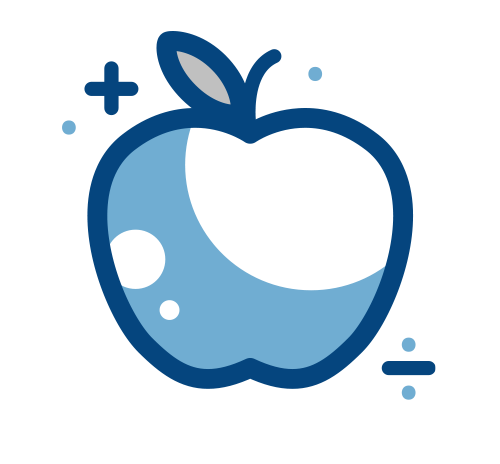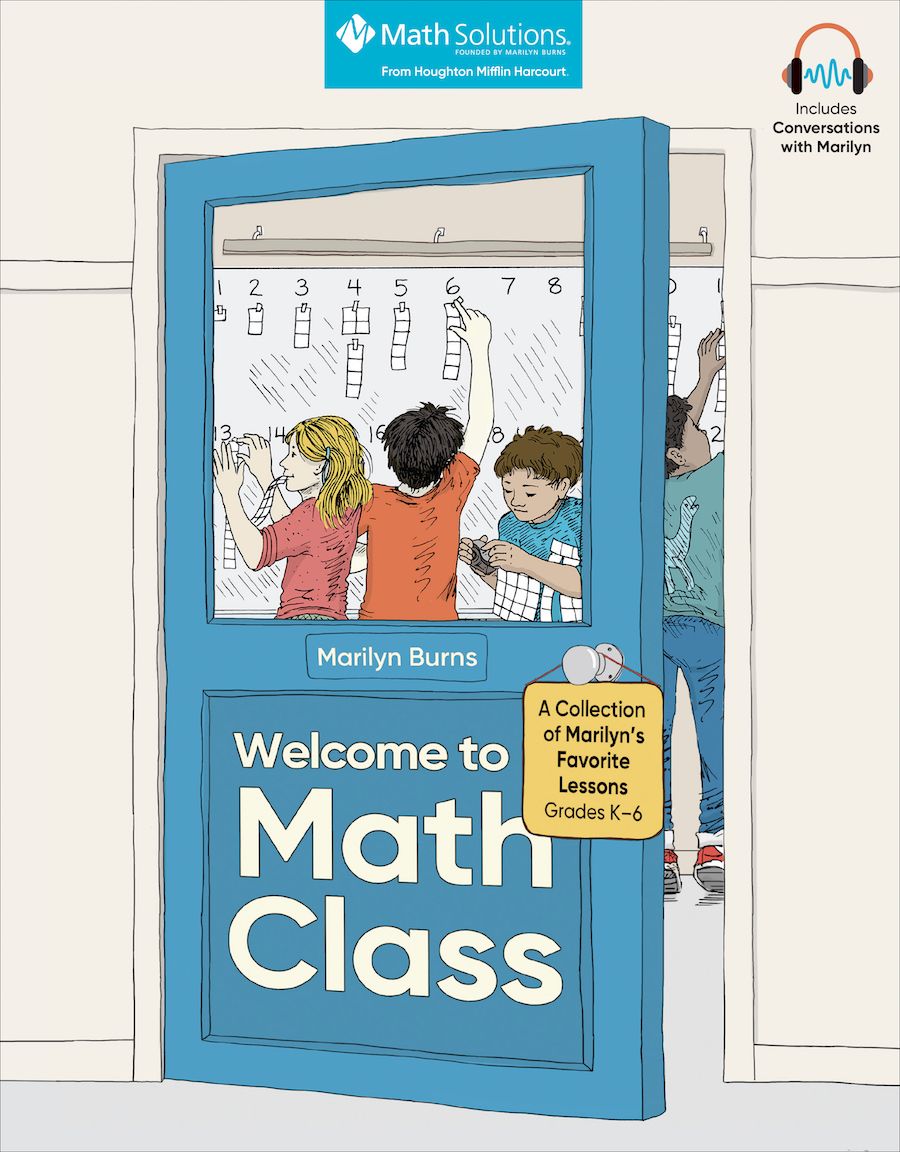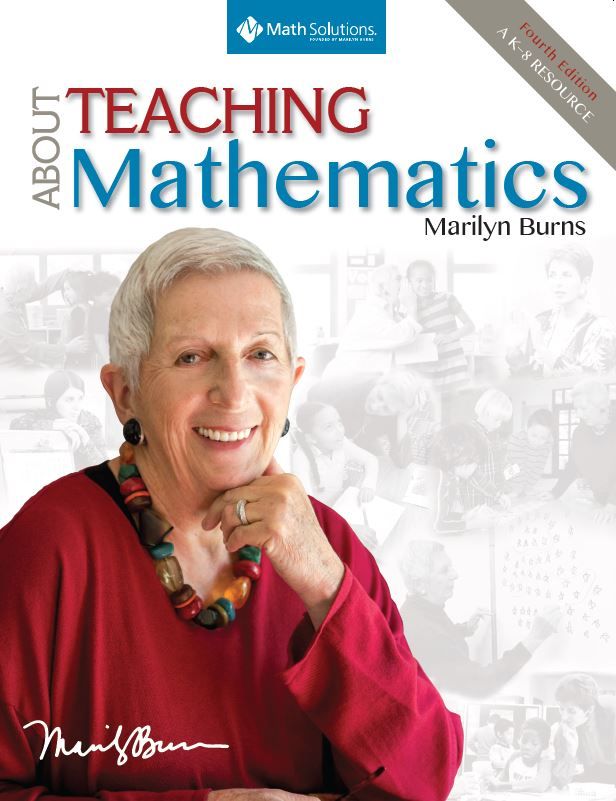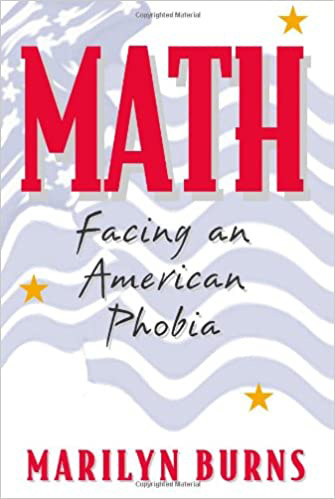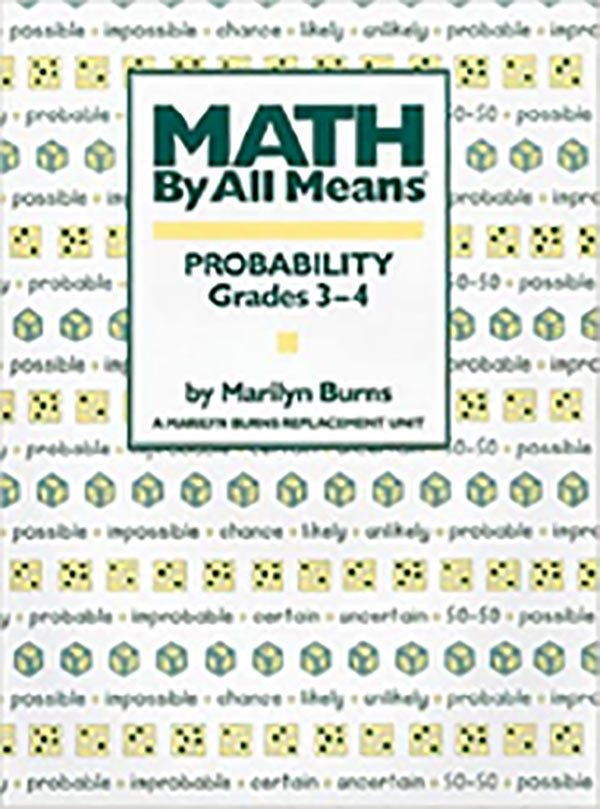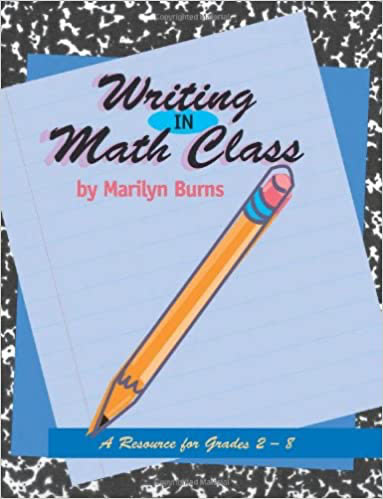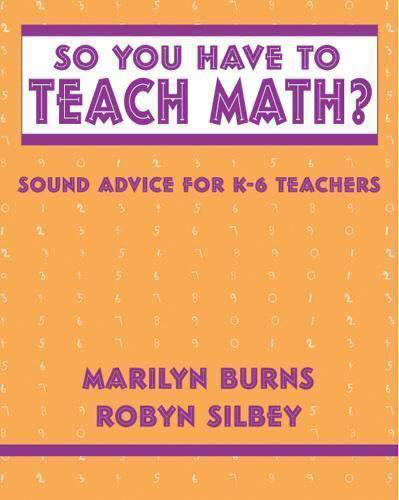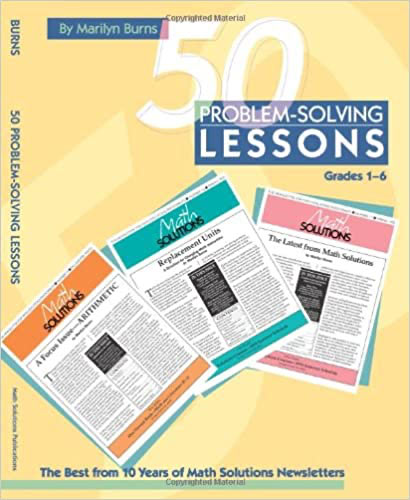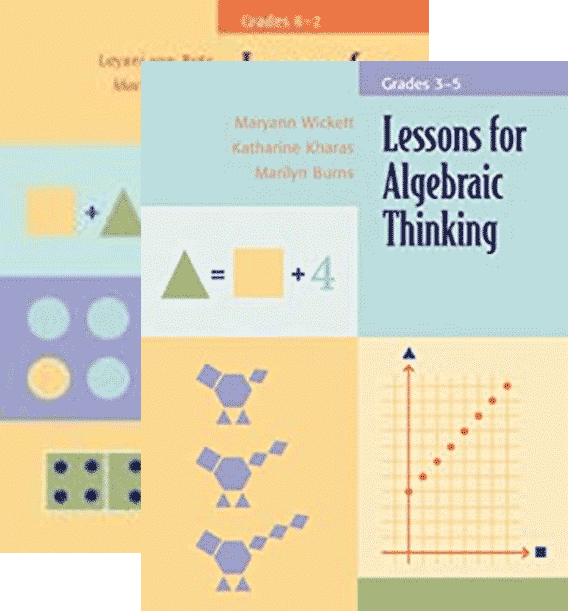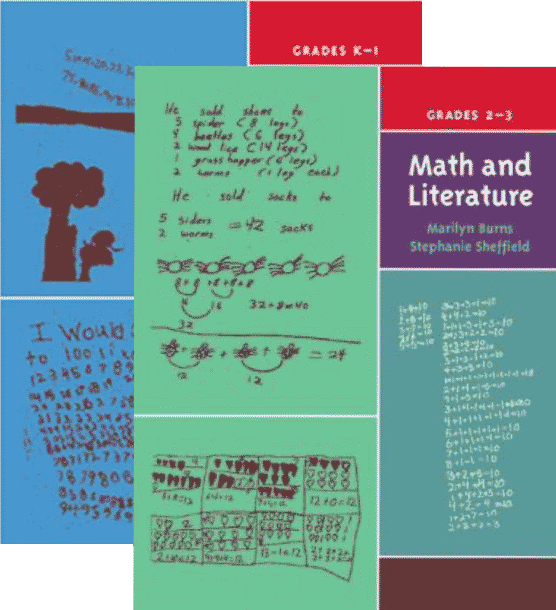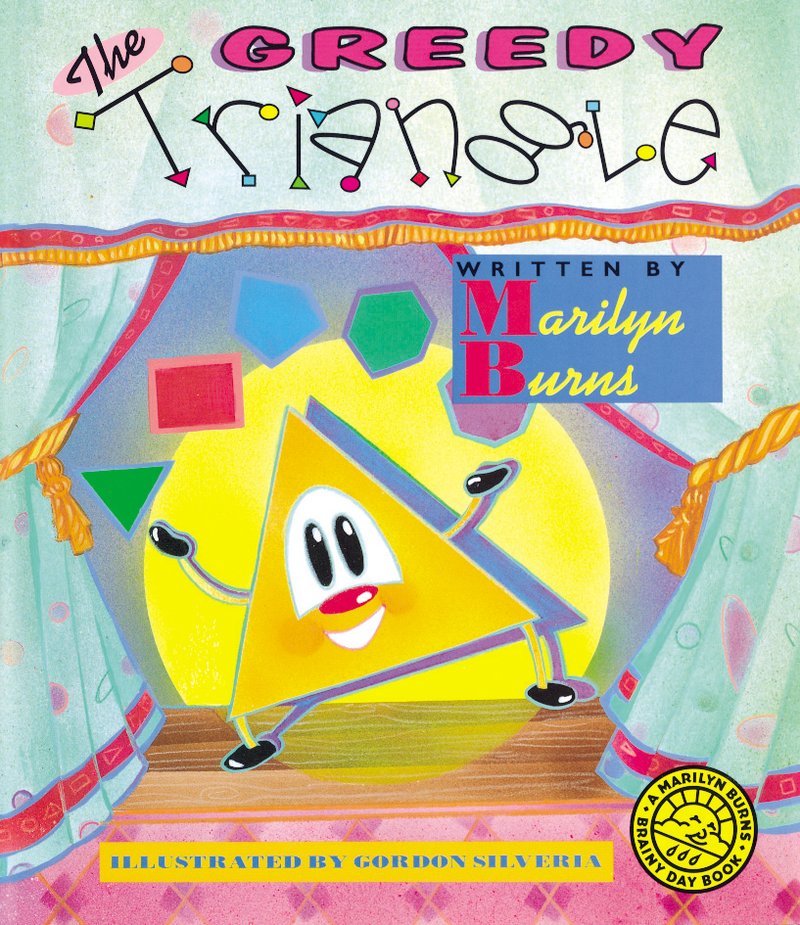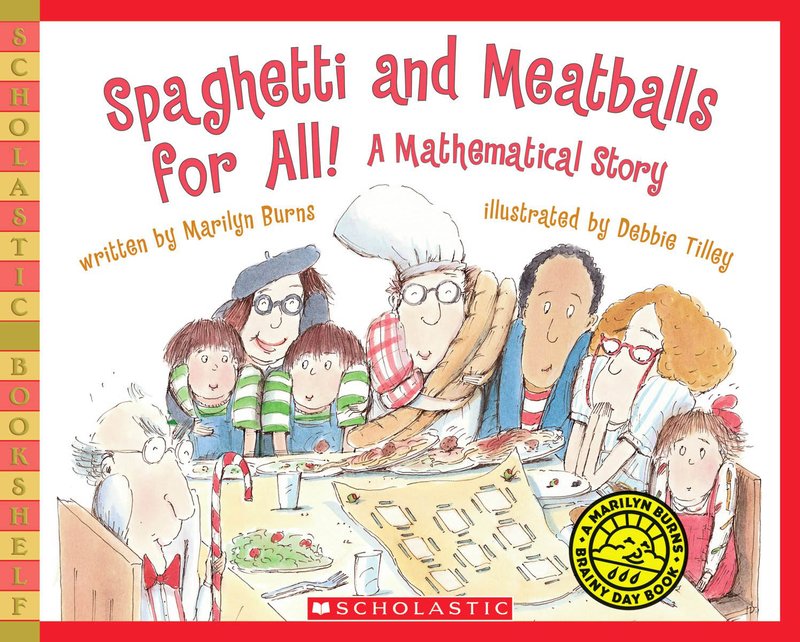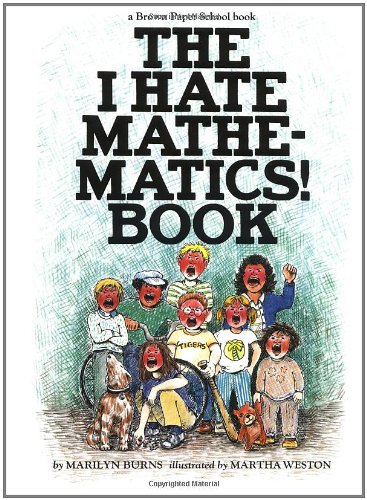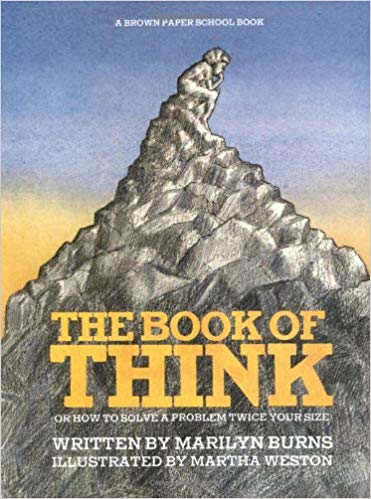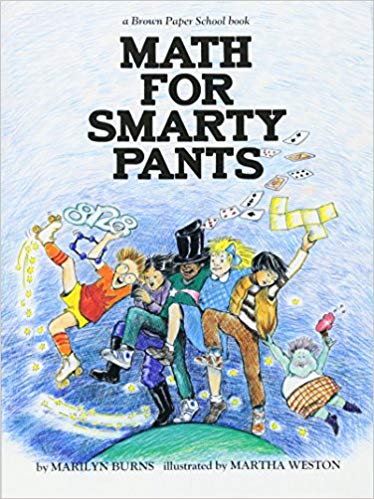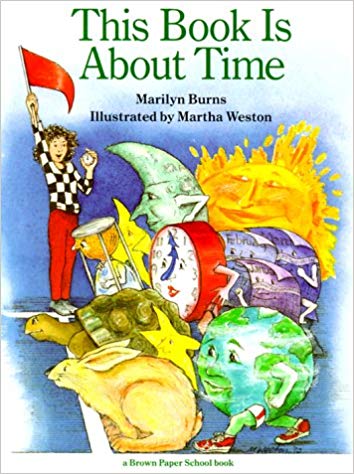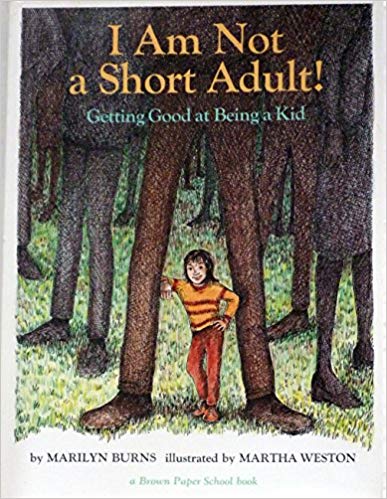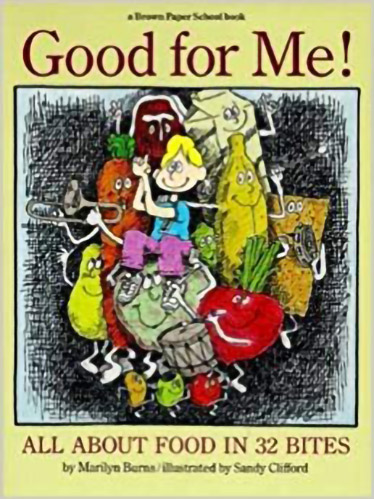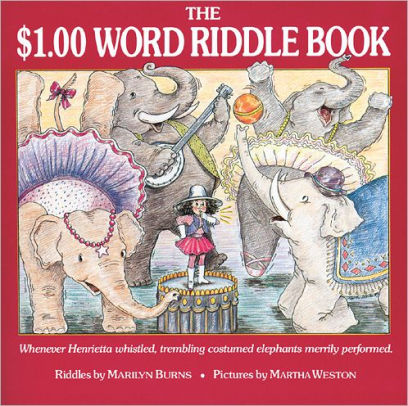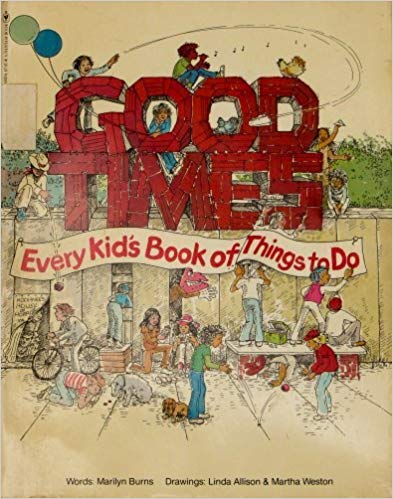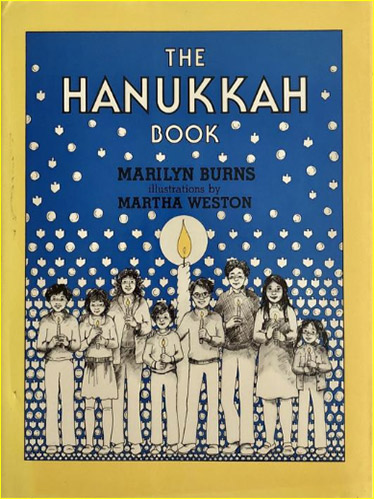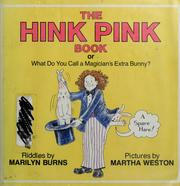Professional Books
Since founding Math Solutions, I’ve regularly “borrowed” classes to teach so I could continue to improve my teaching and explore new instructional ideas. I began writing vignettes to tell the stories of my successes and exciting classroom moments and also to describe the bumps I would have liked to avoid. I’ve included almost 200 of these vignettes in the twenty professional books I’ve written.
Welcome to Math Class
Grades K–6
For this book, I chose sixteen of my favorite K–6 lessons that have held up over the years to become a permanent part of my teaching repertoire. Along with the vignettes of the lessons are nine podcasts. And also, you can listen to Audio Sneak Peeks.
About Teaching Mathematics
Fourth Edition
The major overhaul in this Fourth Edition is the first section. I present twenty-three issues that I now think are the most essential “starting points” for thinking about K–8 math teaching. Then I connect these to the specific needs of classroom teaching.
Math: Facing an American Phobia
Why do so many Americans have a distaste for math and lack confidence in their own math abilities? In this book I address what math can and should mean to all of us, and I describe how we can keep our children from adopting negative attitudes toward math.
Math By All Means: Probability
This six-week unit of instruction introduces students to basic ideas about probability. Games, experiments, and investigations capture students’ interest while involving them with predicting outcomes, testing predictions, and formulating theories.
Writing in Math Class
Writing has become an integral part of my math teaching. In this book, I explain how writing supports students’ learning of math, identify four types of writing assignments, give suggestions for incorporating writing into math instruction, and address questions from teachers.
So You Have to Teach Math
In this book, my co-author Robin Silbey and I identified more than 100 questions that new and experienced elementary teachers often ask themselves. Then we dug into our combined teaching experiences to provide answers that give teachers support and direction.
50 Problem-Solving Lessons
I’ve always been on the lookout for practical and compelling ideas to expand and enhance my teaching repertoire, to keep my teaching alive and vibrant. In this book, I present math teaching ideas that I compiled from teachers across the U.S. and that span all areas of the math curriculum.
Lessons for Algebraic Thinking
Written with Math Solutions master teachers, the lessons help teachers see how instruction in algebra builds on and supports the instruction they’re already providing in number and geometry. Lessons cover algebraic topics of patterns, functions, variables, and coordinate graphs.
Math and Literature
Elementary teachers regularly use children’s literature to stimulate their students’ imaginations. In these two books, my co-author Stephanie Sheffield and I show teachers how to use children’s books to bring enjoyment and excitement to learning mathematics.
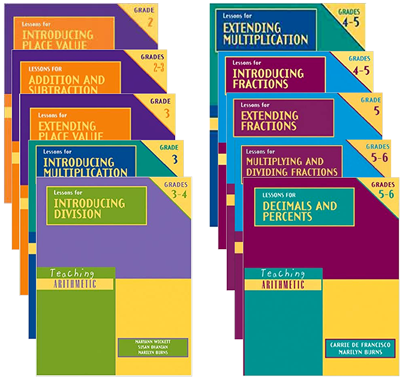
Teaching Arithmetic Series
Grades 2–6
The books in this series all have the same goal—to present lessons that build students’ mathematical understanding and skills with the basics of elementary math. The clear lesson descriptions are targeted for specific topics and grades and are all supported with samples of student work. For some, I collaborated with Math Solutions master teachers.
BOOKS IN THIS SERIES:
Introducing Place Value, Grade 2
Extending Place Value, Grade 3
Introducing Multiplication, Grade 3
Extending Multiplication, Grades 4–5
Introducing Division, Grades 4–5
Extending Division, Grades 5–6
Introducing Fractions, Grades 4–5
Extending Fractions, Grade 5
Multiplying and Dividing Fractions, Grades 5–6
Decimals and Percents, Grades 5–6
Children’s Books
I wrote my first children’s book in 1975, The I Hate Mathematics! Book, and dedicated it to one of my students who informed me almost daily that she hated math. (It became our private joke as she softened over the year.) Writing that book inspired me to continue writing for kids and I’ve written a dozen children’s books in all. Some engage kids with math and some with other topics.
The Greedy Triangle
In this quirky introduction to polygons, a bored triangle visits a shapeshifter, requests one more side and one more angle, and is turned into a quadrilateral. But after a short while, the triangle gets bored again and decides another side and angle would be even better, then another side and angle, and then more. An accident brings a change of mind. A special teaching section at the end suggests classroom lessons.
Spaghetti and Meatballs for All!
Mr. and Mrs. Comfort are having a family reunion! Mr. Comfort cooks his famous spaghetti and meatballs and Mrs. Comfort carefully arranges eight tables and thirty-two chairs so that everyone will have a seat. But then the guests arrive — with their own seating plans! This story draws children into thinking about area and perimeter. A special section at the end suggests classroom lessons.
The I Hate Mathematics! Book
This classic is for anyone who erroneously believes that the world is divided into people who are math people and people who aren’t. Jokes, riddles, puzzles, investigations, and experiments prove that math is an engaging way for everyone to look at the world.
The Book of Think
Brain-teasers, riddles, and projects help readers discover new ways of thinking about solving problems. The suggestions in the book help children open their minds, exercise their creativity, and hone their skills of logic and communications as they solve problems.
Math for Smarty Pants
This book is jam-packed with activities that can be done using everyday objects — cards, pennies, pencils, notebooks, and more. This book takes on the mission of inspiring kids to tackle math problems that involve logic, number sense, geometry, and probability.
This Book is About Time
The goal of this book is to make the topic of time fascinating for kids. The book describes when, why, and how people started to measure time. It discusses such topics as time zones, biorhythms, and jet lag. And it includes instructions for a variety of hands-on related projects.
I Am Not a Short Adult!
This book helps kids deal with many aspects of childhood including family, school, money, legal rights, TV and movies, body language, and more. The primary message is to help kids think about making the most of their childhood right now.
Good for Me!
Information about nutrition and eating is conveyed through readings, quizzes, statistics, activities, and experiments. Included are the history of some popular foods, the effects of various foods on the body, healthy and unhealthy eating habits, and more.
The $1.00 Word Riddle Book
Which day of the week is a $1.00 word? Which U.S. coin? More than 75 riddles in the book that call for searching for words, practicing addition, and thinking mathematically. Plus a story about Robin Hood (yes, a $1.00 name) with missing $1.00 words.
Good Times (Every Kid’s Book of Things to Do)
This nostalgic classic is overflowing with more than 200 engaging, yet simple, activities, all designed to bring creative fun to children and families. Organized into 21 sections that include Paper Capers, Ten Crazy Races, Five Things from Tin Cans, Keeping Secrets, and more.
The Hanukkah Book
Hanukkah is a holiday filled with special foods, songs, games, and the giving and receiving of gifts. It’s a time when people retell the story of the struggle that led to the first Hanukkah celebration. This book is for everyone who wants to understand the true meaning of Hanukkah.
The Hink Pink Book
Riddles are always a hit with kids, and the hink-pink riddles in this book are good for some language play for kids, sometimes with a little math thrown in. Also included are hinky pinky and hinkety pinkety riddles. See my Riddles That Rhyme blog post.
School Resources
Along with writing professional books and children’s books, I’ve also collaborated with Math Solutions instructors to create three school resources. The most recent, Listening to Learn, is a one-on-one digital interview tool that provides teachers information that’s essential for planning instruction. Do The Math provides lessons for building students’ numerical reasoning.

In Listening to Learn we ask students, one-on-one, to solve problems mentally, without the use of paper and pencil. We listen carefully as students explain their reasoning. Then, the digital tool captures their responses and maps them to the appropriate reasoning strategies. Listening to Learn uses the interview data to provided individual and class reports that help inform instruction.
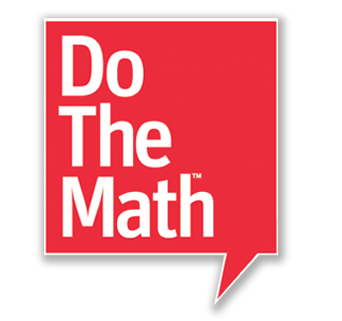
Math is about more than finding the correct answer. It’s about using numerical reasoning to apply the best strategies for solving problems. Created by Marilyn Burns and a team of master educators, Do The Math provides effective instruction for all elementary grade levels, suitable for core instruction, pull-out intervention, or in summer school settings.



